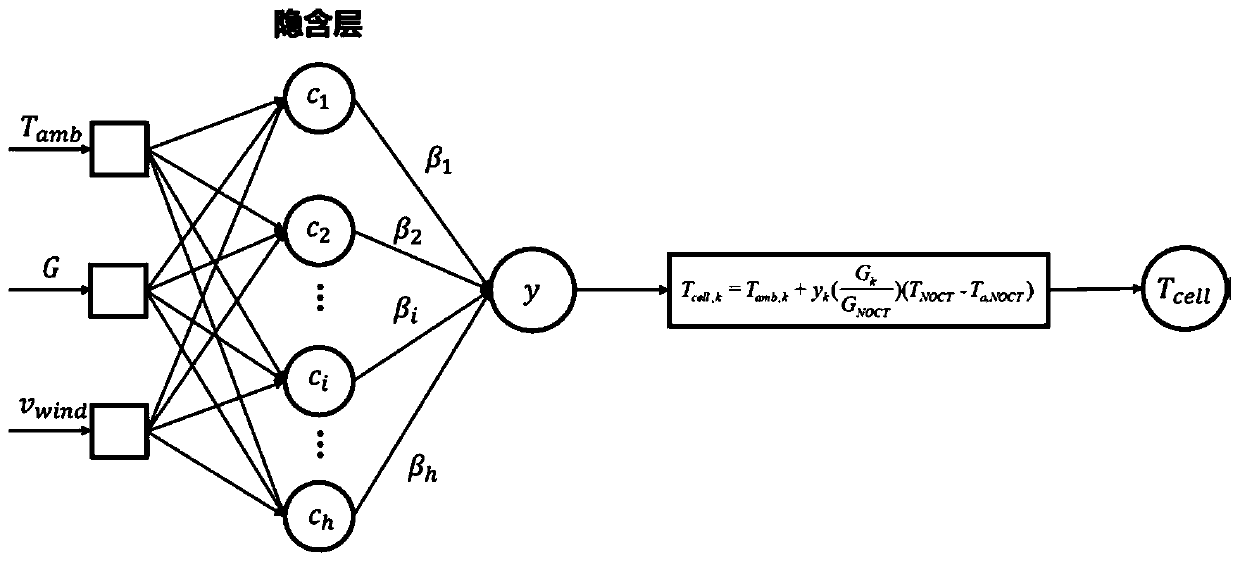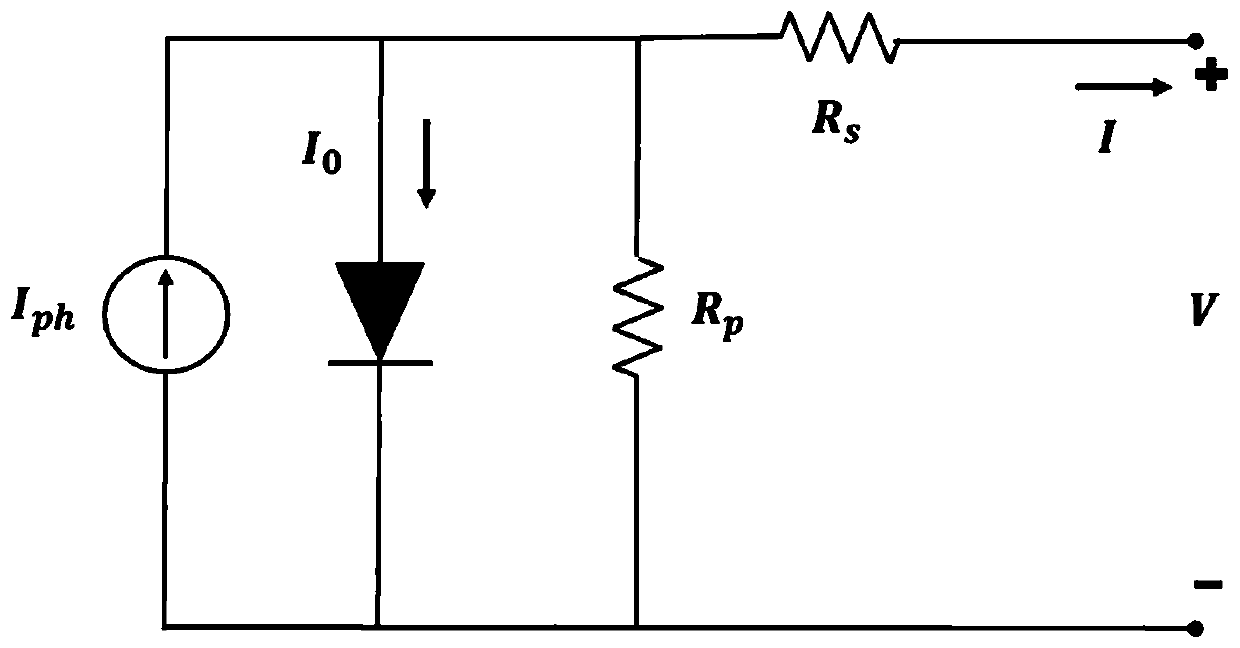Photovoltaic cell working temperature and power generation power joint estimation method
A photovoltaic cell and operating temperature technology, applied in neural learning methods, calculations, computer components, etc., can solve problems such as power prediction error, affecting photovoltaic cell power generation, system operation safety and reliability threats, etc., to improve prediction. Accuracy, the effect of ensuring long-term stability
- Summary
- Abstract
- Description
- Claims
- Application Information
AI Technical Summary
Problems solved by technology
Method used
Image
Examples
Embodiment
[0079] This embodiment is based on a certain SM46 photovoltaic cell experimental device. The parameter information of the battery under standard test conditions and nominal operating temperature conditions is shown in Table 1. The I-V curve and P-V curve of the standard test conditions are as follows Figure 4 shown. Therefore, in the photovoltaic cell operating temperature prediction model based on the artificial neural network model, G NOCT Take 800W / m 2 ,T a,NOCT Take 20℃, T NOCT Take 45°C. based on a single diode R p Model of photovoltaic cell power prediction model, G stc Take 1000W / m 2 ,T stc Take 25°C.
[0080] Table 1 Parameter information of SM46 standard test conditions
[0081] Maximum rated power / W 46 Operating current at the maximum power point / A 3.15 Operating voltage at the maximum power point / V 14.6 Short circuit current / A 3.35 Open circuit voltage / V 18.0 Nominal working temperature / ℃ 45
PUM
 Login to View More
Login to View More Abstract
Description
Claims
Application Information
 Login to View More
Login to View More - R&D
- Intellectual Property
- Life Sciences
- Materials
- Tech Scout
- Unparalleled Data Quality
- Higher Quality Content
- 60% Fewer Hallucinations
Browse by: Latest US Patents, China's latest patents, Technical Efficacy Thesaurus, Application Domain, Technology Topic, Popular Technical Reports.
© 2025 PatSnap. All rights reserved.Legal|Privacy policy|Modern Slavery Act Transparency Statement|Sitemap|About US| Contact US: help@patsnap.com



